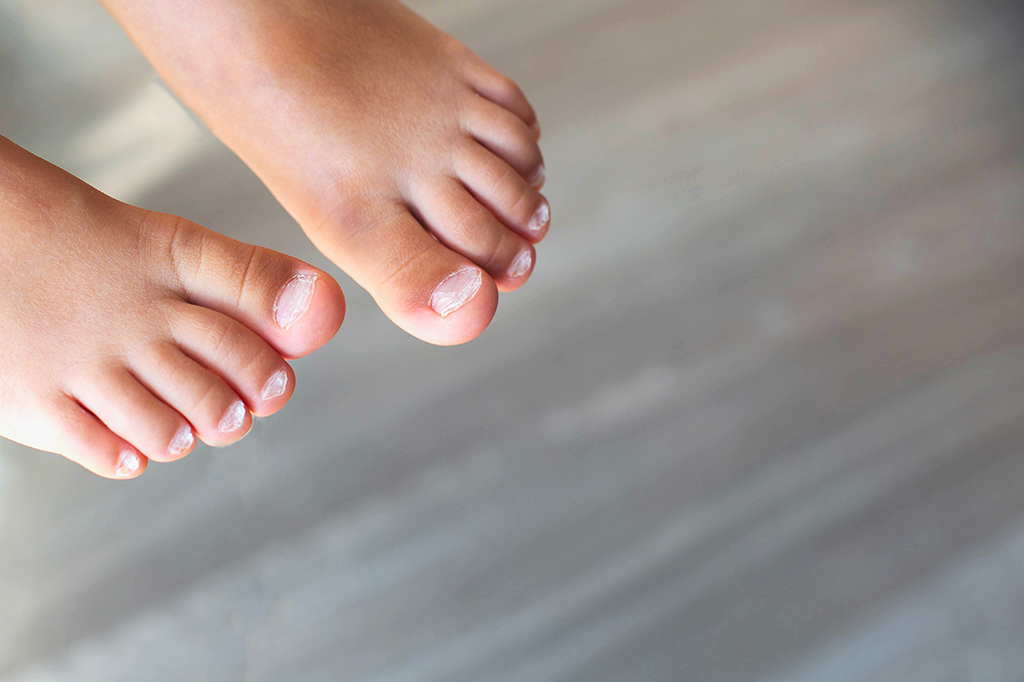A leg length discrepancy (LLD) refers to a difference in the length of one leg compared to the other. While many people have a slight discrepancy that goes unnoticed, a significant difference – typically more than 2 centimeters – can lead to health problems such as altered walking patterns, back pain, and joint issues, affecting quality of life.1,2 Early detection in children is critical to ensure that the child is referred early to a specialist and that the best treatment can be provided.3
Signs and Symptoms of Leg Length Discrepancy in Children
Leg length difference often doesn’t cause pain, and the child may not notice the difference. Parents are often the first to notice signs of leg length discrepancy in children, especially when their child’s walking or posture seems off.3,4 Detecting LLD early allows for prompt referral to a pediatric orthopedic specialist, increasing the likelihood of successful treatment. Common signs include:
- Limping or an uneven gait
- Waddling or swaying while walking
- Stumbling or difficulty balancing
- Walking on tiptoes on one foot
- Frequently stands with one knee bent
Even if walking issues are not immediately apparent, you might also notice your child experiencing posture issues, such as a tilted shoulder and uneven hips. With longstanding LLD children may start experiencing back pain.4,6 Limb leg difference also causes the pelvis to tilt and the lower spine responds by curving into a compensatory scoliosis. Routine scoliosis screenings conducted by school nurses or pediatricians may also discover a spinal curve caused by an LLD.
LLD can be either structural (the bone(s) in one limb are shorter than the other) or functional (a discrepancy caused by scoliosis and by joint contractures, in the knee, hip or ankle).7 Both types require medical evaluation to determine the underlying cause and best treatment.
Common Causes of Leg Length Discrepancy in Children
There are many reasons that can cause a difference in leg length in a child. Some are present at birth (congenital LLD), while others are acquired, meaning they are caused by injuries or illnesses.4
- Congenital LLD: Present at birth, though it may not become noticeable until the child grows. Causes include:2,4,8
- Fibula or Tibia hemimelia
- Congenital Femoral Deficiency, or Proximal femoral focal deficiency (PFFD)
- Congenital Posteromedial Bowing of the Tibia
- Bone diseases such as Ollier disease, congenital pseudarthrosis of the tibia, or multiple hereditary exostoses
- Hemihypertrophy
Neuromuscular conditions, such as cerebral palsy, may be associated with a true leg length discrepancy, but also causes functional leg length discrepancy due to muscle contractures that affect leg alignment.9
- Acquired LLD: This occurs due from injury to a child’s growth plates, such as fractures, infection, or tumors that affects a child’s growth.4,10 When a growth plate is damaged, the affected leg may slow or stop growing, leading to a shorter leg than the other one, which continues to grow normally. Alternatively, a fracture in certain bones, like the femur, may rarely cause overgrowth during the healing process, resulting in a leg longer than the other one.
Seeking a Diagnosis for Pediatric Leg Length Discrepancy
If you suspect your child has a leg length discrepancy, it’s essential to consult a pediatric orthopedic specialist. They will take a comprehensive medical history and perform a detailed physical exam, including leg measurements to determine the extent of the discrepancy. Diagnostic imaging, such as X-rays, may be used to obtain precise measurements.11 Ideal X-rays will create an image of the entire lower extremities including the pelvis, thighs, lower legs, and feet. Not all medical facilities have this x-ray capability. A more advanced imaging system called EOS, is also becoming more commonly available in large pediatric centers. This advanced imaging can provide ideal accuracy and more importantly can significantly reduce the amount of radiation exposure to your child compared to regular x-rays.
Appropriate work-up is crucial in a growing child with an LLD. A limb length specialist will also be able to predict what your child’s future leg length difference will be, which is important in creating a long-term treatment plan and choosing the ideal times to perform procedures with the goal of equal leg lengths at skeletal maturity.
A pediatric orthopedic team with experience in LLD diagnosis and treatment can help guide you through treatment options. There are both nonsurgical and surgical options to treat LLD and treatment should be tailored to an individual child. In cases where the difference in leg length is significant, surgical options like the intramedullary lengthening nail – a minimally invasive solution for leg lengthening – may be considered.
This device, inserted into the bone, gradually lengthens the shorter leg over time, allowing for precise control and minimizing disruption to the surrounding tissues. Regardless or treatment type, early and appropriate intervention can significantly improve a child’s quality of life and prevent long-term complications.
References
- Parvizi J, Kim GK. Chapter 177 – Pediatric Leg-Length Discrepancy. In: Parvizi J, Kim GK, eds. High Yield Orthopaedics. W.B. Saunders; 2010:367-369.
- Roye BD. CHAPTER 16 – Orthopedics. In: Polin RA, Ditmar MF, eds. Pediatric Secrets (Fifth Edition). Mosby; 2011:614-647.
- Beresford MW, Cleary AG. Evaluation of a limping child. Current Paediatrics. 2005/02/01/ 2005;15(1):15-22. doi:https://doi.org/10.1016/j.cupe.2004.10.004
- Gurney B. Leg length discrepancy. Gait & Posture. 2002/04/01/ 2002;15(2):195-206. doi:https://doi.org/10.1016/S0966-6362(01)00148-5
- Mattatia J, Valentin H, Fredj P, et al. Leg length discrepancies (LLD): An etiology to be considered in its proper measure. A critical and historical review. Journal of Bodywork and Movement Therapies. 2024/04/01/ 2024;38:391-398. doi:https://doi.org/10.1016/j.jbmt.2024.01.036
- Kendall JC, Bird AR, Azari MF. Foot posture, leg length discrepancy and low back pain – Their relationship and clinical management using foot orthoses – An overview. The Foot. 2014/06/01/ 2014;24(2):75-80. doi:https://doi.org/10.1016/j.foot.2014.03.004
- Khamis S, Carmeli E. Relationship and significance of gait deviations associated with limb length discrepancy: A systematic review. Gait & Posture. 2017/09/01/ 2017;57:115-123. doi:https://doi.org/10.1016/j.gaitpost.2017.05.028
- Post M. 9 – Pediatrics. In: Rynders SD, Hart JA, eds. Orthopaedics for Physician Assistants (Second Edition). Elsevier; 2022:317-357.
- Green LB, Hurvitz EA. Cerebral Palsy. Physical Medicine and Rehabilitation Clinics of North America. 2007/11/01/ 2007;18(4):859-882. doi:https://doi.org/10.1016/j.pmr.2007.07.005
- Arkader A, Skaggs DL. Chapter 2 – Physeal Injuries. In: Mencio GA, Swiontkowski MF, eds. Green’s Skeletal Trauma in Children (Fifth Edition). W.B. Saunders; 2015:16-35.
- Wynes J, Schupp A. Assessment of Pediatric Limb Length Inequality. Clinics in Podiatric Medicine and Surgery. 2022/01/01/ 2022;39(1):113-127. doi:https://doi.org/10.1016/j.cpm.2021.09.004
 Share on facebook
Share on facebook
 Share on twitter
Share on twitter
 Share on linkedin
Share on linkedin
 Share on email
Share on email

